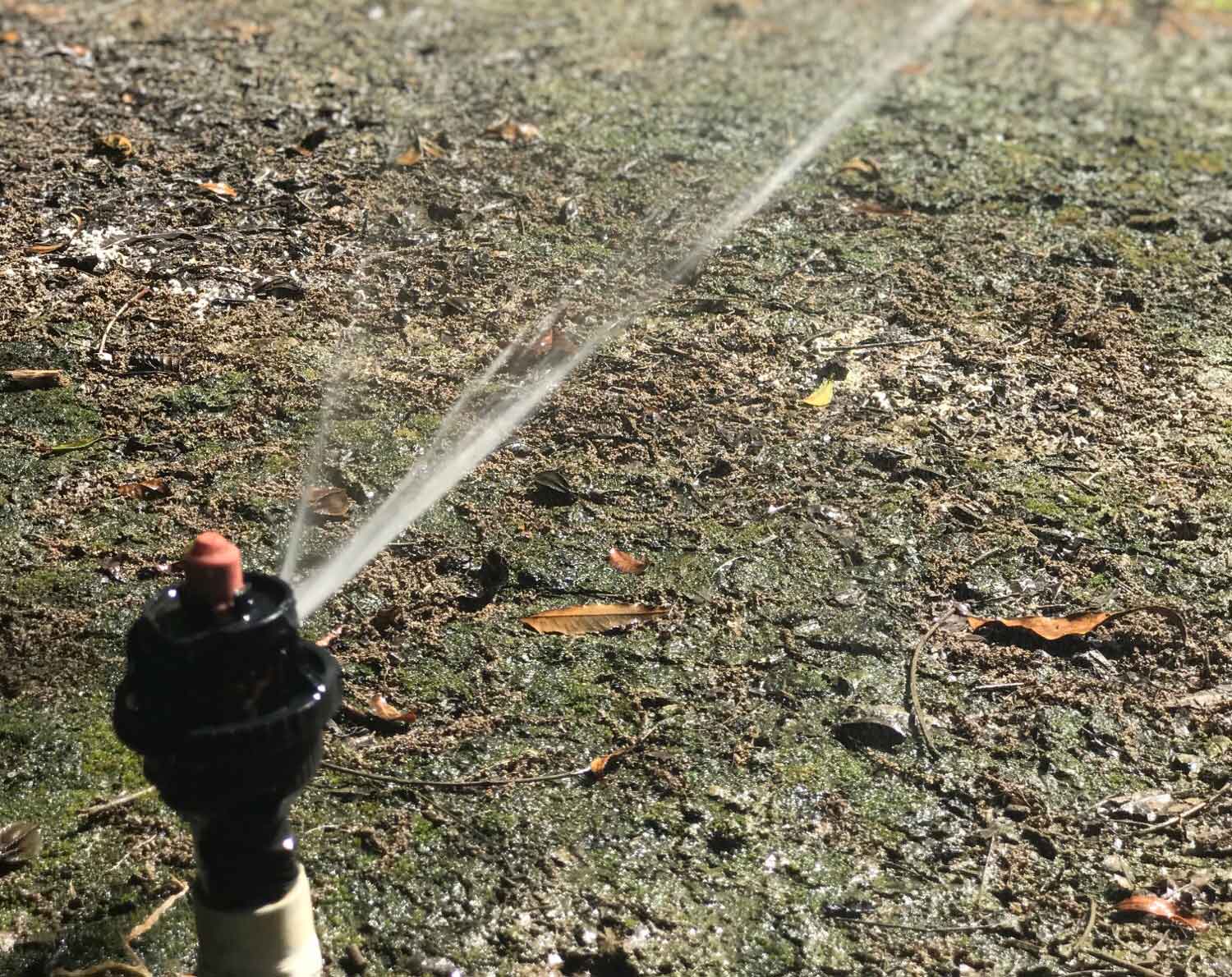
More than any other tree nut grown in the West, pecans are water loving with mature orchards taking up 4-4 1/2 acre feet of water from early spring through fall.
New orchards can be started with a drip or micro sprinkler system, but Mike Powell, head of operations and orchard development at Pacific Gold Ag said that long term, a system that can deliver high volumes of water over a larger area will be necessary to avoid tree stress.
Pacific Gold Ag has pecan orchards in Colusa and Kern counties, two very different growing areas. Powell said it is typical in the Sacramento Valley to find solid set sprinkler irrigation systems in pecans. These systems are underground except for the sprinkler heads and do not have to be moved at harvest or other orchard activity. In the San Joaquin Valley, above ground tubing is more common.
The type of system and the orchard soils will determine an irrigation schedule to meet the needs of the trees. Powell said irrigation could begin as early as mid February, two to three weeks before leaves begin to push. Pecan trees are sensitive to stress, he said, and water and nutrients need to be delivered as early as possible. In Kern County, Powell said they are set up to deliver maximum evapotranspiration (ET) in the summer. They use moisture meters and weather forecasts to make irrigation decisions during the critical nut fill time in July and August.
The tree water status should never fall below the stress level said Richard Hereema, extension pecan specialist at New Mexico State University (NMSU).
He said pecan growers in New Mexico are advised to take a three-prong approach to water management in their orchards. The first is to monitor soil moisture. That can be accomplished with tools ranging from a shovel to a high tech electronic soil probe. Next, use climate and weather data for irrigation scheduling. Using evapotranspiration rate and the average crop co-efficient for the current date, determine how much water the trees are using. Finally, use a pressure chamber to determine plant water status. The goal, Hereema said, is to prevent the tree from becoming thirstier than is healthy as that condition will affect tree physiology and photosynthesis. Research at NMSU found that at minus 8-9 bars there would be an adverse affect on photosynthesis.
Different pecan cultivars will also determine water management, Hereema said. In California kernel development and finish will happen earlier in the season. Stress at kernel maturity will have less of an adverse effect than at kernel fill.

Cecilia Parsons
Cecilia Parsons has lived in the Central Valley community of Ducor since 1976, covering agriculture for numerous agricultural publications over the years. She has found and nurtured many wonderful and helpful contacts in the ag community, including the UCCE advisors, allowing for news coverage that focuses on the basics of food production.
She is always on the search for new ag topics that can help growers and processors in the San Joaquin Valley improve their bottom line.
In her free time, Cecilia rides her horse, Holly in ranch versatility shows and raises registered Shetland sheep which she exhibits at county and state fairs during the summer.















